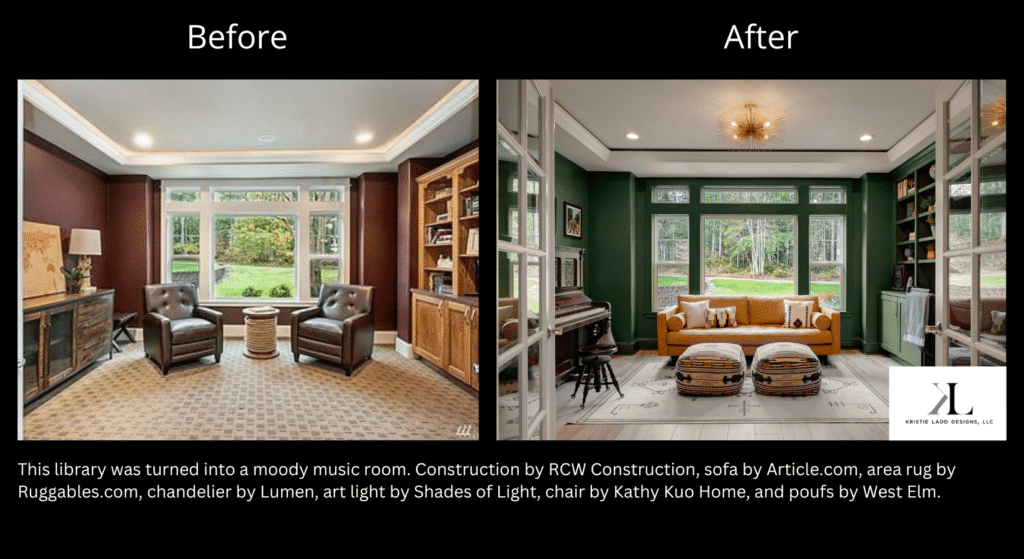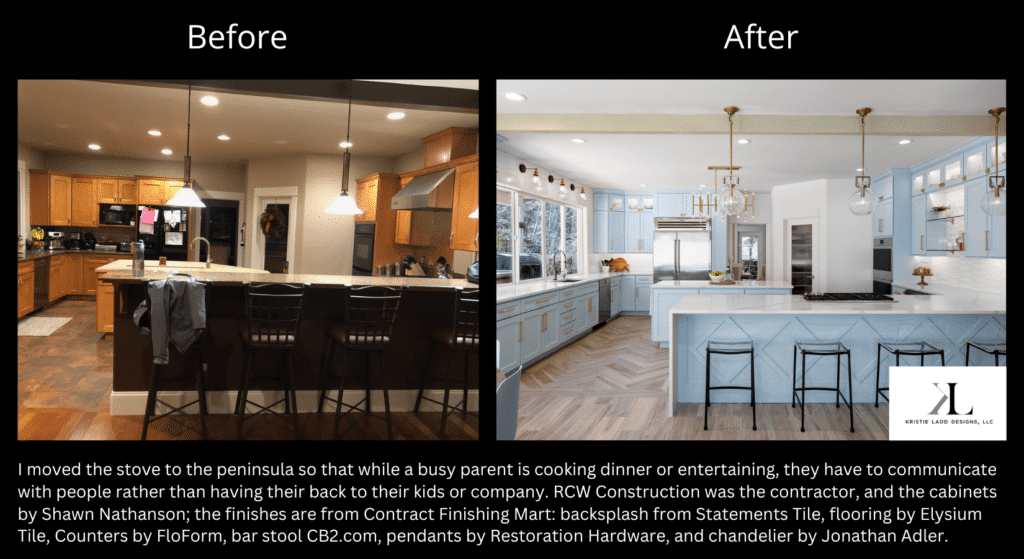Business Community
Gig Harbor Real Estate | Reimagining your home to fit your needs when you can’t move
If you were lucky to buy or refinance during the COVID-19 pandemic, when interest rates were around 3% or less, you know you are sitting on a gold mine. But if the needs of your family changed in the meantime – you need another bedroom, an office, or want something updated and fresh – you also know that the idea of selling and buying another with a higher interest rate is a gut punch.
While some people truly need to move, others with great interest rates have stayed put, instead opting to reimagine their current spaces with a touch of creativity and strategic design to come up with practical solutions.
I sat down with Kristie Ladd, founder of Kristie Ladd Designs LLC, to explore innovative ways homeowners can refresh and repurpose their homes to better suit their needs. Kristie focuses on residential and small commercial design and is known for her ability to translate a homeowner’s vague ideas into life.
What design strategies do you recommend for homeowners who are outgrowing their space?
Kristie: The key is maximizing the utility of your existing space. Before considering expansion, assess whether you truly need everything in your current space. Purging unused items can free up valuable square footage. Additionally, multi-purpose rooms are a game-changer. A single space can serve as a home office, a playroom, and a guest room with strategic furniture placement and versatile design elements.

Kristie Ladd
Can you provide insights into transforming an unused formal dining, den, or living room into a functional office space?
Kristie: If a multi-use design within a room won’t cut it, assess your unused spaces and spaces you do not enjoy living in. Adding a wall to partition off a section of the formal dining room can create a defined office space without the need for extensive renovations. This allows for the integration of essential office elements such as built-in desks, storage solutions, and adequate lighting while maintaining the room’s overall aesthetic appeal. This transformation not only maximizes the room’s functionality but also adds value to the home by aligning with contemporary lifestyle preferences.
Are there any furniture items you’ve seen that can practically serve many uses?
Kristie: Dual-function furniture is invaluable for optimizing space. Expandable Furniture is a company I recently used for a Murphy bed/shelving/table combo and a small writing desk that transforms into a large dining table.
Furniture functionality is important in tight spaces. In small eating spaces, I love utilizing round pedestal tables because their lack of legs and corners allows for more chairs. In living rooms, I prefer ottomans over coffee tables for comfort under the feet, so ottomans with hidden storage are excellent choices for maximizing functionality without compromising style.
What are some design ideas for increasing storage in a house?
Kristie: When redesigning spaces like kitchens and bathrooms, maximizing vertical storage by extending cabinets to the ceiling is crucial. This not only provides additional storage for seasonal items but also eliminates the accumulation of dust in “dust catcher spaces” atop cabinetry.
Kitchens and baths are always top of mind when refreshing a house. How can homeowners refresh the spaces without tearing everything out and starting from scratch? Is there a point where you just should tear everything out and start from scratch?
Kristie: If I am looking at a space with a client who is unsure whether a complete tear-out or simple refresh is appropriate, I ask, “Is this your long-term home?” For those intending to stay long-term, investing in a comprehensive renovation tailored to their needs is worthwhile. However, for homeowners planning to relocate in the near future, I would encourage the client to spend as little money as possible. Focusing on cosmetic upgrades such as painting cabinets and updating countertops can provide a refreshed look without breaking the bank. The difference between these two options can be tens of thousands of dollars.

What is the worst finish for homeowners on a budget to compromise on? Is there anything where they would be putting good money after bad?
Kristie: Flooring has an immediate and significant visual impact on a home, so it is not a finish I would skimp on. Luxury vinyl plank flooring (LVP), while popular and budget-friendly, is a material that has the potential to go awry. If you do not get a good quality LVP, it could lift or peel down the road, and some just look a lot cheaper than the price paid. Investing in durable flooring ensures longevity and enhances the overall aesthetic appeal of your home.
Separately, a word about LVP. While it may be an unpopular opinion, LVP is one of my least favorite trends. I understand its functionality but don’t love the look or feel. Everything has its purpose, I believe LVP’s purpose is to be used in spaces where wet feet run around, like a lake or beach house. But even still, when I design a space such as a lake or a beach house, I always present tile first.
Speaking of trends, what are design trends that are popular today that will stand the test of time? Conversely, are there design trends that may not have a long shelf life?
Kristie: By definition, a “trend” is not permanent. It is a general direction in which something is developing or changing. I find that my clients start asking about trends long after they have saturated the market and toward the end of the trend’s natural lifecycle (roughly 10-year cycles).
For example, right now, the trend is white subway tile with dark grout and paned shower doors. If a client asks for this in a master bathroom, I would redirect their attention to an upcoming trend, like brightly colored bathroom tile, and encourage the current trend in a smaller space, like a powder room, if they are dead set on the trendy style.
In your experience, other than major items like electrical and plumbing, are there any areas DIYers can save money?
Kristie: Skilled DIYers can save significantly by general-contracting smaller projects themselves, provided they have the time and skill to coordinate various trades. Generally speaking, general contractors coordinate a job and hire subcontractors to execute it, often marking up the work of the subcontractors as their fee. By handling tasks like demolition and hiring quality subcontractors directly, homeowners can cut costs without compromising on craftsmanship. While DIYing is not everyone’s cup of tea (it is definitely not mine!), should you decide to take some of your project on yourself, it’s essential to approach the projects with patience and caution, as mistakes can lead to additional expenses.
If you need help with maximizing your space, contact Gig Harbor interior designer Kristie Ladd at [email protected] or 253-331-5283.

Alison Paoli
